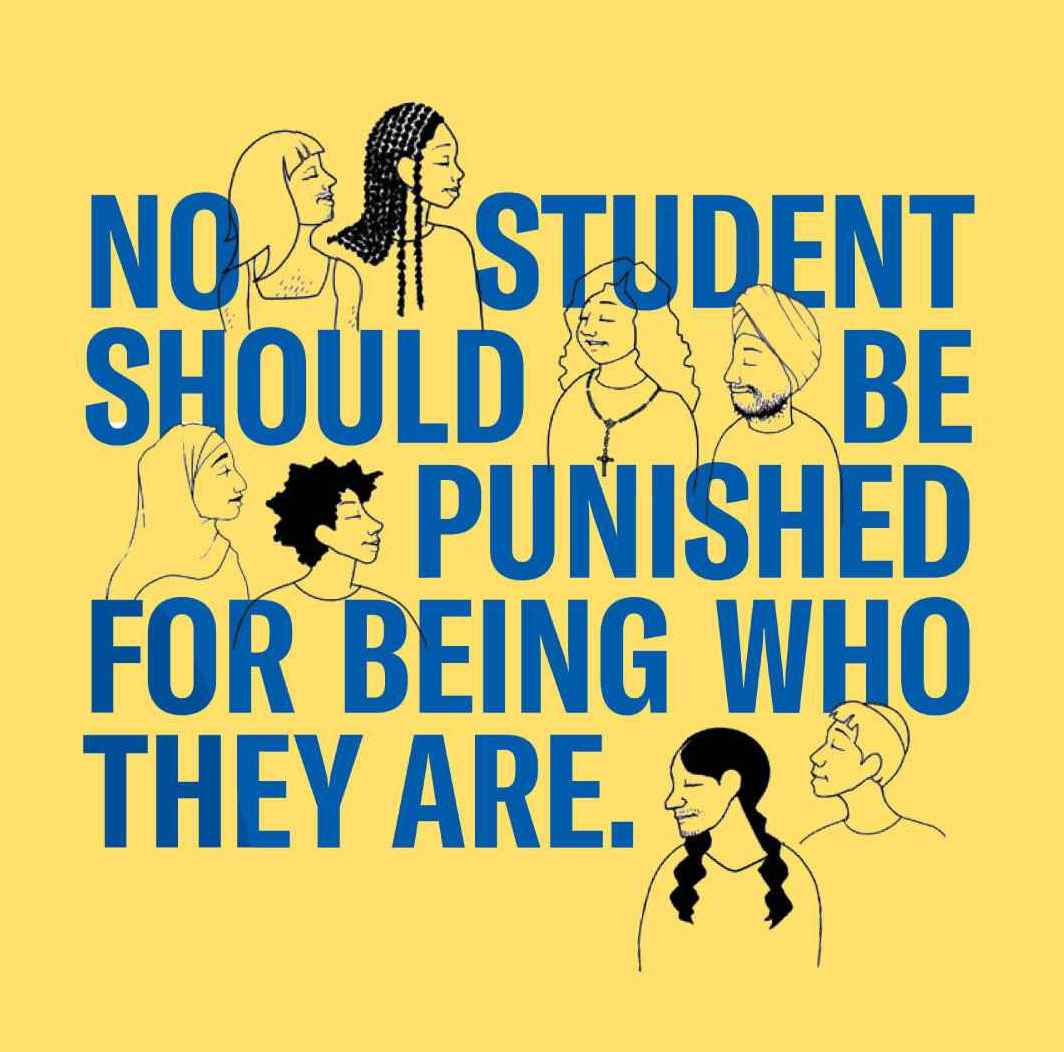- Publications >
- Report
Dressed To Express: How Dress Codes Discriminate Against Texas Students and Must Be Changed
Document Date: February 1, 2024
No student should ever be punished for being who they are.
Our new report shows that more than half of Texas public schools have dress code policies that shame and penalize students for simply showing up in the classroom as their authentic selves.

We reviewed the 2022-2023 dress codes of 1,178 of Texas’ 1,207 K-12 public school districts and found that:
- 53% of surveyed districts force students to follow dress codes rooted in outdated gender norms and stereotypes, including boys-only hair length rules and other rules that only apply to girls.
- Over 7% of 2022-2023 dress codes ban race-based hair textures and styles, which are now explicitly protected by the CROWN Act for the 2023-2024 school year.
- More than 80% of surveyed districts have vague hair policies that may be used to disproportionately punish Black students.
- More than 80% of surveyed districts prohibit head-coverings, many without naming religious and cultural exemptions, further alienating students of certain religious and cultural backgrounds and putting the responsibility on their guardians to petition districts for permission.
- Almost 80% of surveyed districts have rules prohibiting worn, frayed, or mis-sized clothing, which disproportionately affect low-income students who may not have access to new or fitted clothing.
Our schools should be places where students feel free to express themselves and be celebrated for who they are.
Our report outlines specific ways that schools can foster a safe environment that welcomes all students.
Texas schools must update policies to:
- Remove discriminatory language
- Focus on inclusivity and equity
- Incorporate community involvement and regular review
- Create clear and specific guidelines
- Center respect for student expression
- Ensure fair and non-disruptive enforcement
- Engage in data collection and review
- Provide sensitivity training
- Maintain dress code consistency

If you grew up attending Texas schools, we want to learn from you.
Tell us about your experience with Texas public school dress codes. Or, with their permission, tell us how dress or grooming codes have affected a Texas student in your care.
Sharing our stories is a powerful way that we can bring awareness to the scope of this issue — and advocate for our schools to update their outdated policies.

If your school’s dress code is discriminatory and unfair, it may be worth challenging.
Our report has resources to help you do just that, including:
- Talking points on how to advocate against discriminatory dress codes (pages 56-57)
- A template advocacy letter to send to your school district (page 58)
- Step-by-step guidelines on how to file a school grievance or complaint with the government (pages 59-61)
Additionally, our Students’ Rights Hub has resources for you to:
- Know the rights that students have at school
- Understand the rights that LGBTQIA+ and all students have in Texas
- Access our letter urging Texas public school districts to end race-based hair discrimination by complying with the CROWN Act
- Access our letter sent to school administrators about updating discriminatory dress codes

Related Content
- Free Speech and Pluralism
ACLU of Texas, Partners Urge Texas Court to End Hair Discrimination in Darryl George Case

- Free Speech and Pluralism
ACLU of Texas Finds 51 School Districts Likely Remain in Violation of the CROWN Act
Stay Informed
Sign up to be the first to hear about how to take action.
By completing this form, I agree to receive occasional emails per the terms of the ACLU’s privacy statement.
By completing this form, I agree to receive occasional emails per the terms of the ACLU’s privacy statement.

